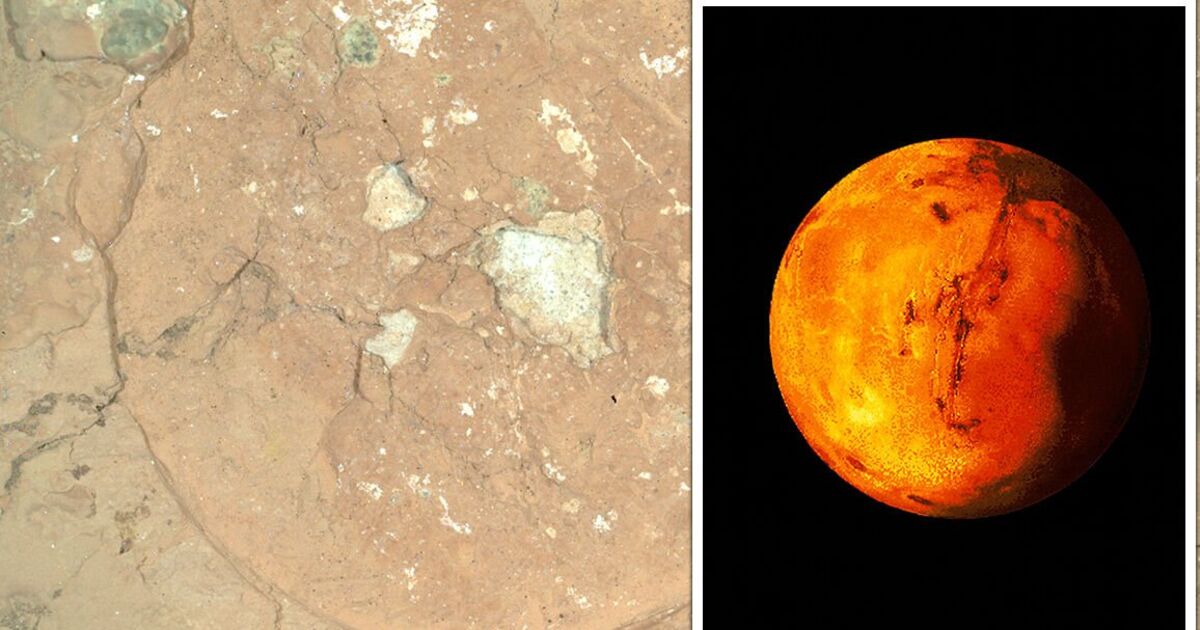NASA has identified mysterious “green spots” on the surface of Mars, with the exciting discovery raising the tantalising possibility of past microbial life on the planet.
Although NASA has emphasised that there’s no evidence these spots indicate ongoing biological activity on Mars, such green markings are often associated with microbial processes here on Earth.
Found within a patch of exposed Martian rock, this unexpected feature could be an intriguing clue as scientists search for signs of life beyond Earth.
The findings emerged after the Perseverance rover scraped away a section of Martian rock known as the Wallace Butte abrasion, located in a region known as the “Serpentine Rapids”.
Its investigations revealed a five-centimetre patch with striking colours: white, black, and green.
Dark green areas, marked by deep-toned cores with light-green, fuzzy rims, left scientists stunned.
NASA spokesman Adrian Broz, a Postdoctoral Scientist, Purdue University/University of Oregon, explained: “On Earth, red rocks – sometimes called “red beds” – generally get their colour from oxidised iron (Fe3+), which is the same form of iron that makes our blood red, or the rusty red colour of metal left outside.”
Green spots such as those observed in the Wallace Butte abrasion were common in ancient “red beds” on Earth and form when liquid water percolates through the sediment before it hardens to rock, kicking off a chemical reaction that transforms oxidised iron to its reduced form, resulting in a greenish hue, he explained.
Mr Broz added: “On Earth, microbes are sometimes involved in this iron reduction reaction.
“However, green spots can also result from decaying organic matter that creates localised reducing conditions.
“Interactions between sulphur and iron can also create iron-reducing conditions without the involvement of microbial life.”
Mars is by far the most visited planet in the Solar System, and the recent discoveries suggest it was once covered by oceans until they evaporated billions of years ago.
Nevertheless it remains a viable place to search for life, in particular the Jezero Crater, which Perseverance is exploring.
A new study involving University of Oxford researchers and published in Nature Astronomy last year found that artificial intelligence could accelerate the search for extraterrestrial life by showing the most promising places to look.
Dr Freddie Kalaitzis, Department of Computer Science, University of Oxford, said: “Our process combined statistical microbial ecology surveys, remote sensing from unmanned aerial vehicles, and machine learning to map, model, and predict the distribution of biosignatures in a Mars-relevant setting.
“The approach may also have applications for other astrobiology targets, such as the surface of Titan, the plumes of Enceladus, or the ice cover of Europa.”
Nevertheless, speaking about Perseverance in 2021, Gentry Lee, chief engineer for the Planetary Science Directorate at NASA’s Jet Propulsion Laboratory, warned the burden of proof required would be immense.
He said: “To quote Carl Sagan, ‘If we see a hedgehog staring in the camera, we would know there’s current and certainly ancient life on Mars, but based on our past experiences, such an event is extremely unlikely.
“Extraordinary claims require extraordinary evidence, and the discovery that life existed elsewhere in the universe would certainly be extraordinary.’”
Ken Williford, deputy project scientist for the Mars 2020 Perseverance rover mission at JPL, added: “We expect the best places to look for biosignatures would be in Jezero’s lakebed or in shoreline sediments that could be encrusted with carbonate minerals, which are especially good at preserving certain kinds of fossilised life on Earth.
“But as we search for evidence of ancient microbes on an ancient alien world, it’s important to keep an open mind.”












